
Bird Counting
The history and purpose of bird counting.
Download a printable Bird Counting Checklist here.
Christmas Bird Count
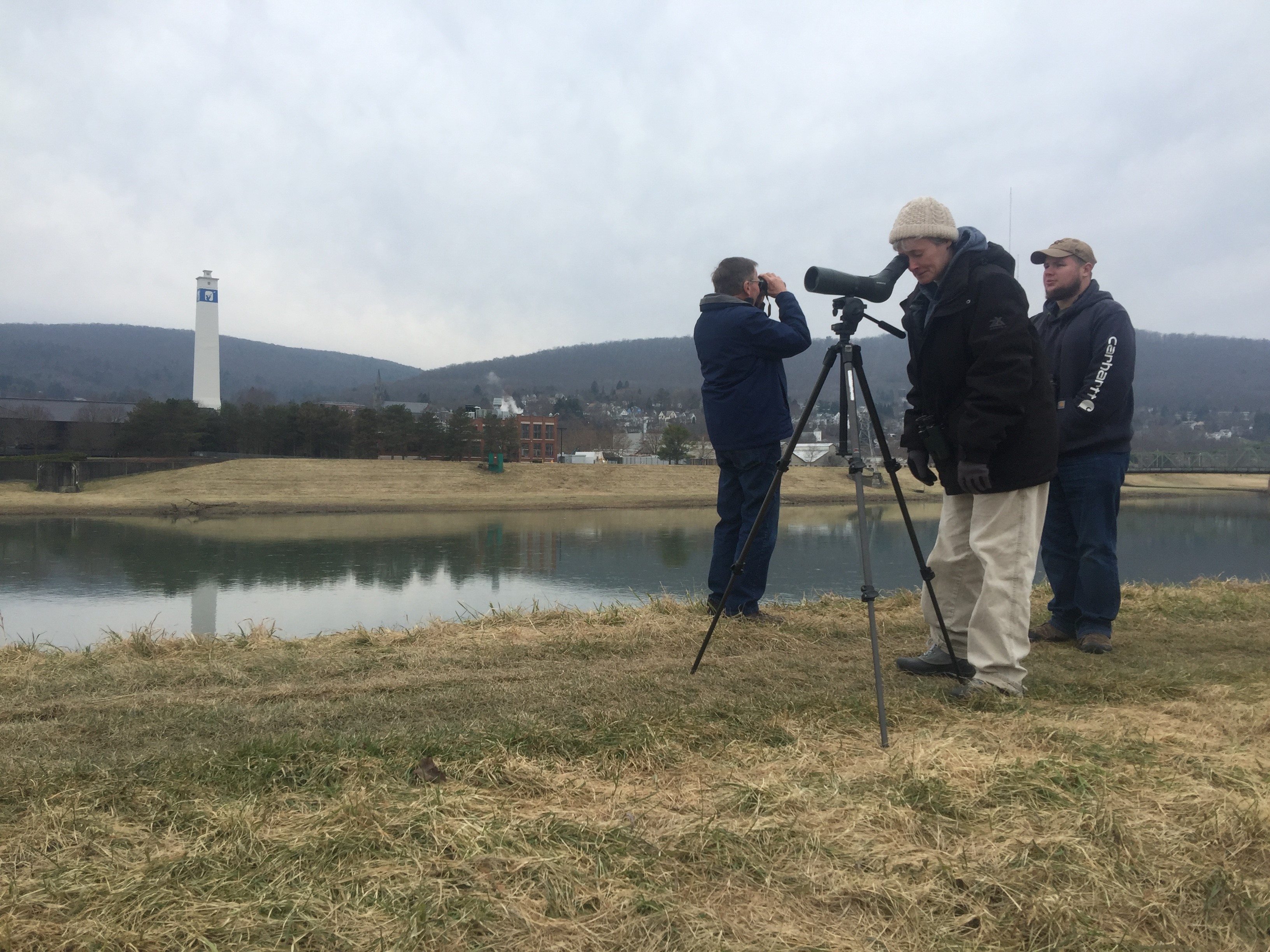 December 15th, 2018 | Members count birds in Corning, NY.
Each year, the Audubon Christmas Bird Count mobilizes over 72,000 volunteer bird counters in more than 2,500 locations across the Western Hemisphere. The Audubon Christmas Bird Count utilizes the power of volunteers to track the health of bird populations at a scale that scientists could never accomplish alone. Data compiled in New York will record every individual bird and bird species seen in a specified area, contributing to a vast community science network that continues a tradition stretching back more than 100 years.
December 15th, 2018 | Members count birds in Corning, NY.
Each year, the Audubon Christmas Bird Count mobilizes over 72,000 volunteer bird counters in more than 2,500 locations across the Western Hemisphere. The Audubon Christmas Bird Count utilizes the power of volunteers to track the health of bird populations at a scale that scientists could never accomplish alone. Data compiled in New York will record every individual bird and bird species seen in a specified area, contributing to a vast community science network that continues a tradition stretching back more than 100 years.
"The Christmas Bird Count is a rewarding way to get involved with Audubon in your community," said Ana Paula Tavares, executive director of Audubon New York. "With over 50 counts in New York State alone, we hope to see record numbers of volunteers participate in support of their local birds."
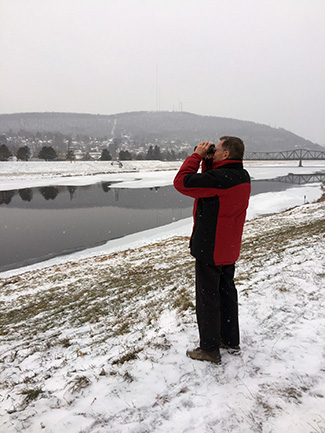 To date over 300 peer-reviewed articles have resulted from analysis done with Christmas Bird Count data. Bird-related community science efforts are also critical to understanding how birds are responding to a changing climate. This documentation is what enabled Audubon scientists to discover that 314 species of North American birds are threatened by global warming as reported in Audubon's groundbreaking Birds and Climate Change Study. The tradition of counting birds combined with modern technology and mapping is enabling researchers to make discoveries that were not possible in earlier decades.
To date over 300 peer-reviewed articles have resulted from analysis done with Christmas Bird Count data. Bird-related community science efforts are also critical to understanding how birds are responding to a changing climate. This documentation is what enabled Audubon scientists to discover that 314 species of North American birds are threatened by global warming as reported in Audubon's groundbreaking Birds and Climate Change Study. The tradition of counting birds combined with modern technology and mapping is enabling researchers to make discoveries that were not possible in earlier decades.
Birders of all ages are welcome to contribute to this fun, nationwide community science project, which provides ornithologists with a crucial snapshot of our native bird populations during the winter months. Each individual count is performed in a count circle with a diameter of 15 miles. At least ten volunteers, including a compiler to coordinate the process, count in each circle. The volunteers break up into small parties and follow assigned routes, which change little from year to year, counting every bird they see. In most count circles, some people also watch feeders instead of following routes.
To sign up for a count, please contact the Chemung Valley Audubon by email at cvaudubon@gmail.org or visit Audubon.
The Audubon Christmas Bird Count began in 1900 when Dr. Frank Chapman, founder of Bird-Lore – which evolved into Audubon magazine – suggested an alternative to the holiday "side hunt," in which teams competed to see who could shoot the most birds. 118 years of counting birds is a long time, but the program somehow brings out the best in people, and they stay involved for the long run. And so the tradition continues.
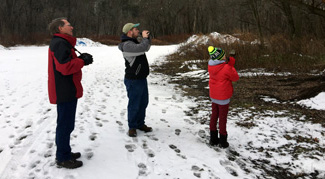
The first Christmas Bird Count was conducted in 1900, the suggestion of Frank Chapman, founder of Audubon magazine. He proposed that instead of killing birds on Christmas, as was tradition, we instead count them. The first count was conducted in 25 places in North America, with results reported by 27 observers. Today, tens of thousands of observers report their counts in thousands of locations. The data is used to further our conservation and restoration efforts. We conduct the Corning Christmas Bird Counts in Elmira and Corning in December and January. Here are complete lists of the species that were sighted in various years:
Corning Christmas Bird Count Results: 2016 | 2017 | 2018 | 2019 | 2020 | 2021 | 2024
Elmira Christmas Bird Count Results: 2016 | 2017 | 2018 | 2019 | 2020 | 2021 | 2023 | 2024
Waterfowl & Bald Eagle Count
Every year, the New York State Department of Environmental Conservation asks volunteers to help find and count ducks and geese throughout the state. It's a great opportunity to get out and see some of the birds that share our region during the winter months. Volunteers are paired with an experienced bird watcher, so no experience is required!
Each January, members of NYSOA visit lakes, rivers, and shorelines to count waterfowl (ducks, geese, swans, loons, grebes, etc.). In most years, more than a quarter million birds are tallied. DEC has acknowledged this to be a useful survey for long-term monitoring of waterfowl populations wintering in New York. Results of the annual survey are published in The Kingbird.
The purpose of the Midwinter Bald Eagle survey is to monitor the status of Bald Eagle wintering populations in the contiguous United States by estimating national and regional count trends, overall and by age class. The survey represents a unique source of long-term, baseline data. In addition to providing information on eagle trends, distribution and habitat, the count has helped to create public interest in Bald Eagles and their conservation.
Great Backyard Bird Count
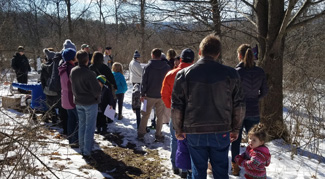 The Great Backyard Bird Count is an international event created by the Cornell Lab of Ornithology, designed to capture a snapshot of where all the birds are for a single weekend in the late winter. We use the event to highlight the diversity of really amazing birds in the southern Finger Lakes region, and we invite you to explore your feathered neighbors, either in your backyard, your favorite park, or wherever you happen to be (it doesn't need to be a backyard!).
The Great Backyard Bird Count is an international event created by the Cornell Lab of Ornithology, designed to capture a snapshot of where all the birds are for a single weekend in the late winter. We use the event to highlight the diversity of really amazing birds in the southern Finger Lakes region, and we invite you to explore your feathered neighbors, either in your backyard, your favorite park, or wherever you happen to be (it doesn't need to be a backyard!).
The count runs over four days in mid February, so you can count every day from the same location, or go out and explore new areas throughout the four-day count period. For more information about the count, visit Great Backyard Bird Count. If you're interested in meeting up for a bird walk, let us know and we'll see if you can put together a program. Finally, stop by our local Wild Birds Unlimited store for more information about birds and bird counting.
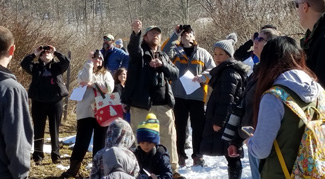 The worldwide event, which is sponsored by the Cornell Lab of Ornithology and the National Audubon Society, along with international partners, provides a snapshot of bird distribution over a four-day weekend each February. Participants submit checklists of their bird sightings to an ever-growing database, and scientists use this data to study changes in bird populations.
The worldwide event, which is sponsored by the Cornell Lab of Ornithology and the National Audubon Society, along with international partners, provides a snapshot of bird distribution over a four-day weekend each February. Participants submit checklists of their bird sightings to an ever-growing database, and scientists use this data to study changes in bird populations.
Each year, more than 22 million birds are counted in over 100 countries. Visit this website to learn all about the Great Backyard Bird Count, see fabulous photos and get your start on counting birds for science.
Montezuma Muckrace
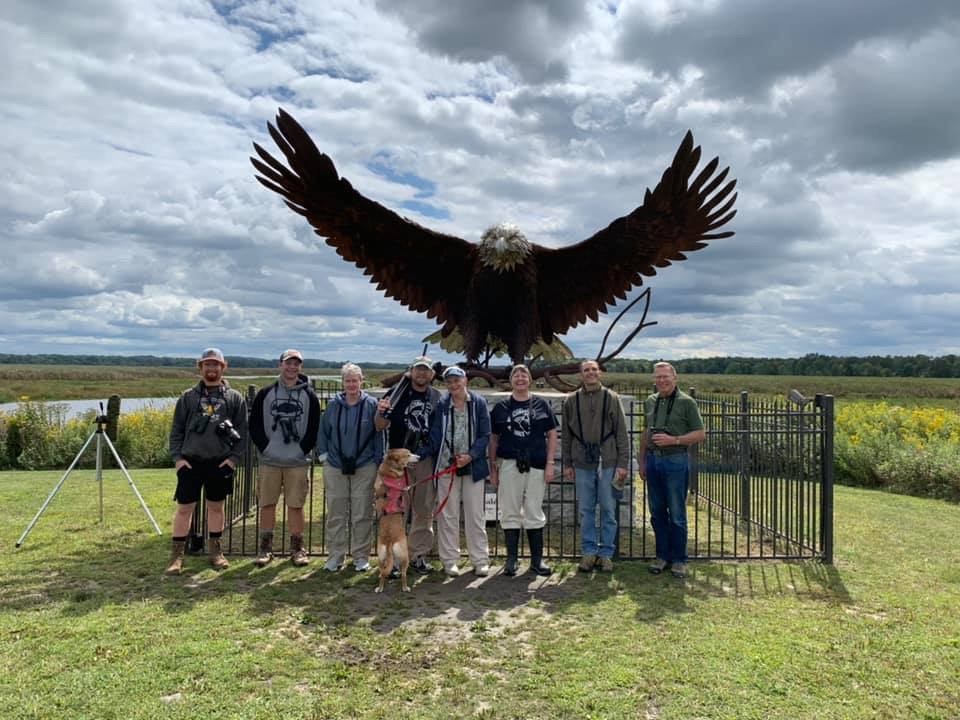
Birdwatchers from across New York and beyond join together to participate in the annual Montezuma Muckrace, organized by the Friends of the Montezuma Wetlands Complex. The Muckrace is a 24-hour bird watching competition that raises funds for bird conservation and environmental education programs in this birding hotspot.
More than 30 teams and 150 participants bird from 7pm to 7pm, and a total of up to 200 species may be seen, heard, or photographed. The CVAS "Tanagers" team participates annually in the Recreational category and typically identifies 90 to 100 species.